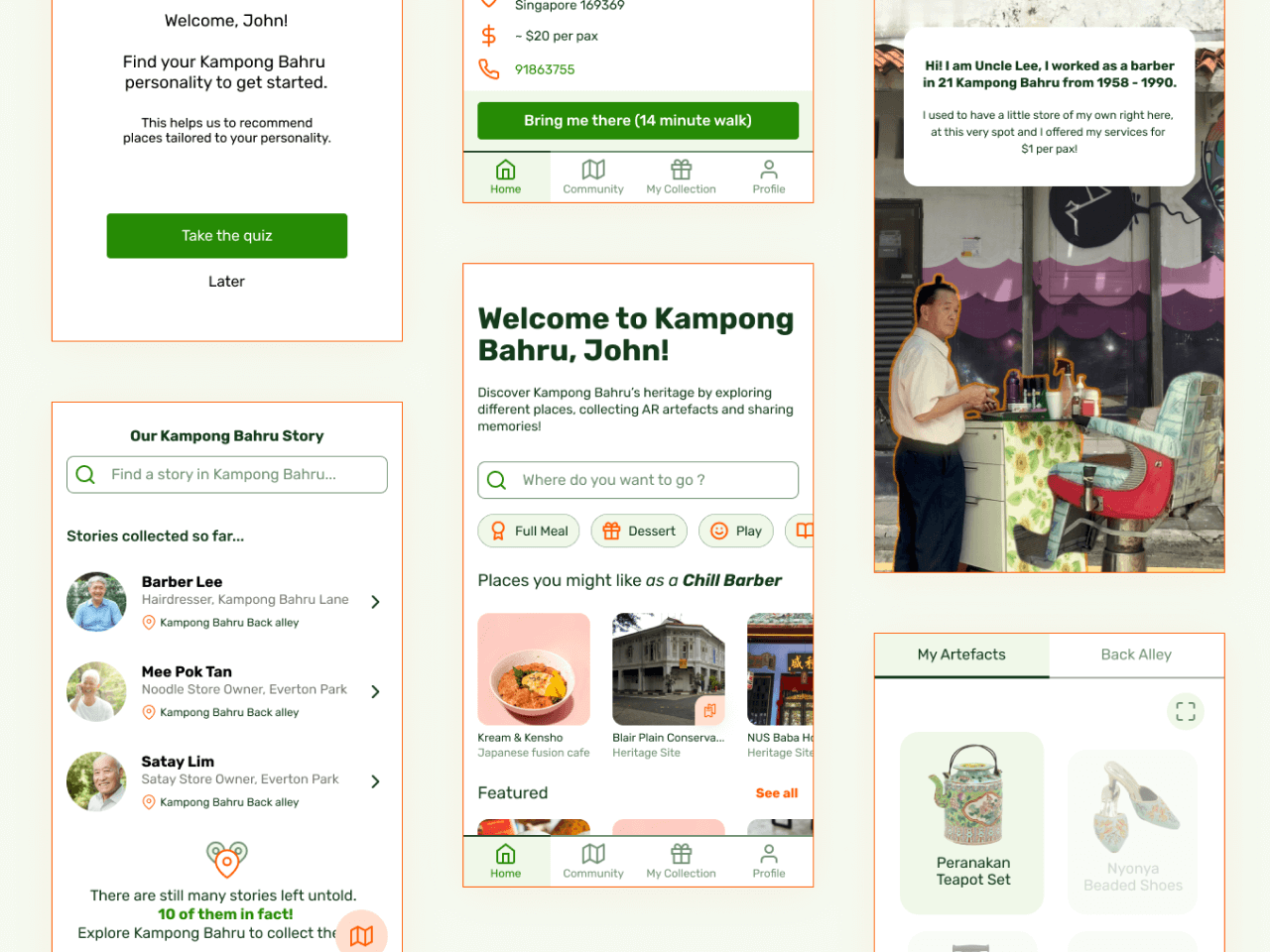
This project was done as part of the module NM4210 Advanced User Experience over the past semester. It has a heavy focus on UX research with 2 separate research phases before the solution was designed.
It is the expression of the ways of living developed by a community and passed on from generation to generation, including customs, practices, places, objects, artistic expressions and values. NUS Baba house, responsible for many Peranakan heritage preservation efforts in Singapore, issued a challenge to the entire module.
Develop a solution that will encourage citizens to have a deeper understanding of the city’s historic urban landscape values, with a specific emphasis on the Tanjong Pagar area where NUS Baba house is situated in.
This project allowed us to choose our own target audience as well as a list of stakeholders in the Tanjong Pagar, or more specifically the Kampong Bahru (KB) area. We carried out 2 rounds of user research and subsequently designed and validated our solution, largely following the design thinking process.

Our project was named Balik Kampong, “return to village” in Malay, as a reflection of how we wanted to revisit memories of the past for this project.
Initially, within the group we decided to target youths specifically for the project as they would be responsible for passing heritage on to the next generation. Furthermore, given the age of social media we live in, we also decided to leverage on youths liking to explore new food and share about their experience. Therefore we ventured to focus on food culture and heritage, finding out what to preserve on this front and how to make it relevant to young adults.
We had a list of local stakeholders to choose from. We chose local food establishments that have been in the area for a long time.
These stakeholders had an arrangement with the module to be interviewed by students within the specific time period. Unfortunately due to unforeseen circumstances, both food establishments were unavailable for interview.
This threw us in for a loop, making us panic a bit. We first decided to see which establishments were willing to be interviewed. We managed to arrange interviews with a couple of cafés in the area. This forced us to shift our focus to:
Modern food culture and its connections to the surrounding area’s heritage.

Initially, we wanted to solve a problem in the space of food culture. However we found out that traditional and modern food establishments can coexist. If we were to continue down this road, we would have to collect data from traditional food vendors instead. This is not possible as we have already tried doing so and failed. Hence, it made more sense to solve a higher level problem based on the existing insights we got.

This led to the formation of our problem statement:
There is a disconnect between the cafés and the area’s larger cultural heritage. Young adults need a way to take an interest in the cultural heritage of the Kampong Bahru area.
From our previous round of research, we realised that young adults wouldn’t mind learning about heritage but don’t have a compelling reason to specifically go to KB to do so. Furthermore, the disconnect highlighted previously further bolsters their disinterest. Therefore, we ventured to integrate the learning experiences in their existing visit to hang out with friends. However there were still some gaps, namely:
The gaps listed previously served as research goals for our next round of research. We employed a variety of methods to answer our research goals.
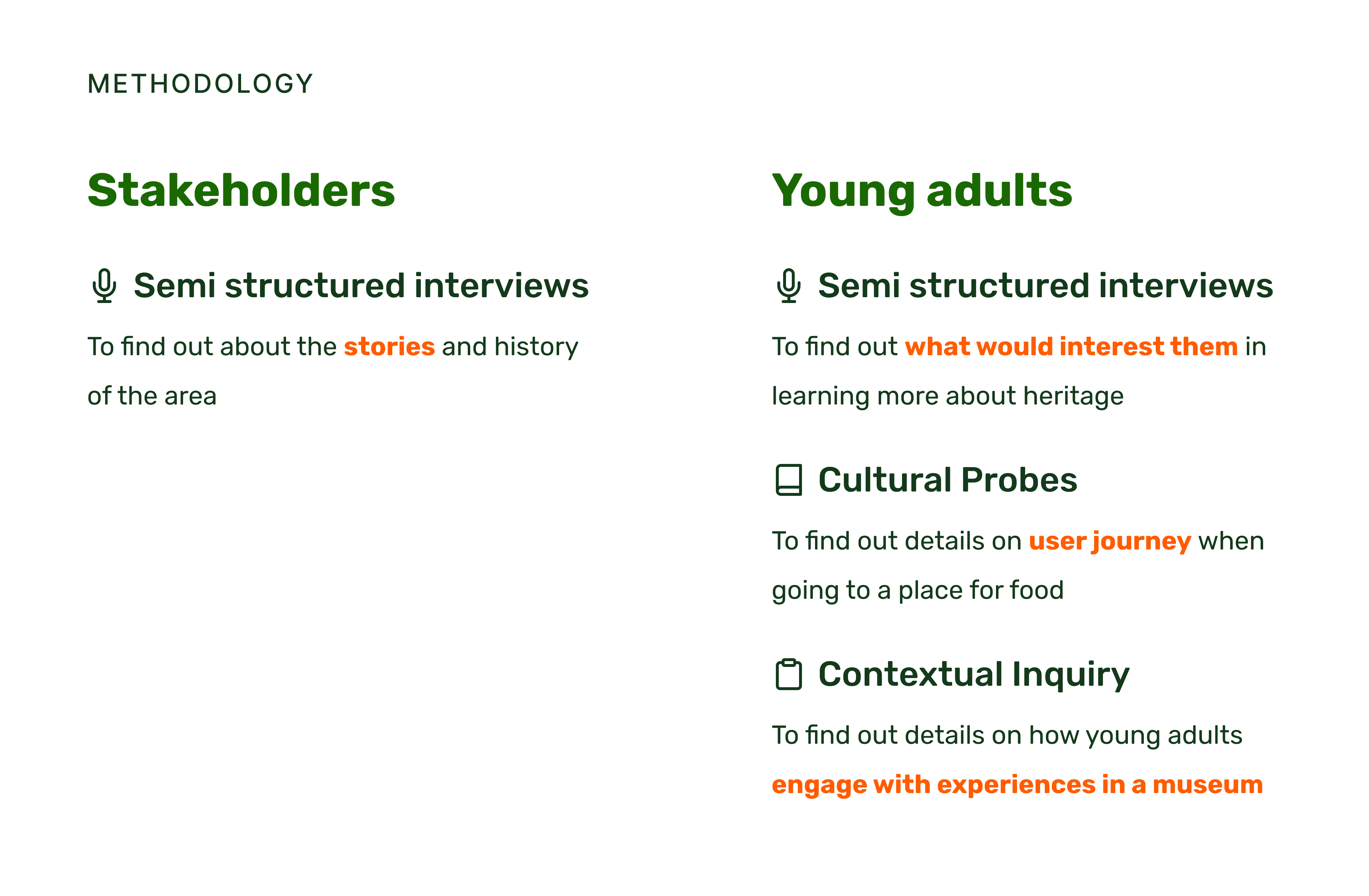
We also took the opportunity to concept test our idea with the young adults we interviewed by showing them our storyboard.
After collecting and analysing our data with affinity mapping, we distilled some key insights in 3 main categories:
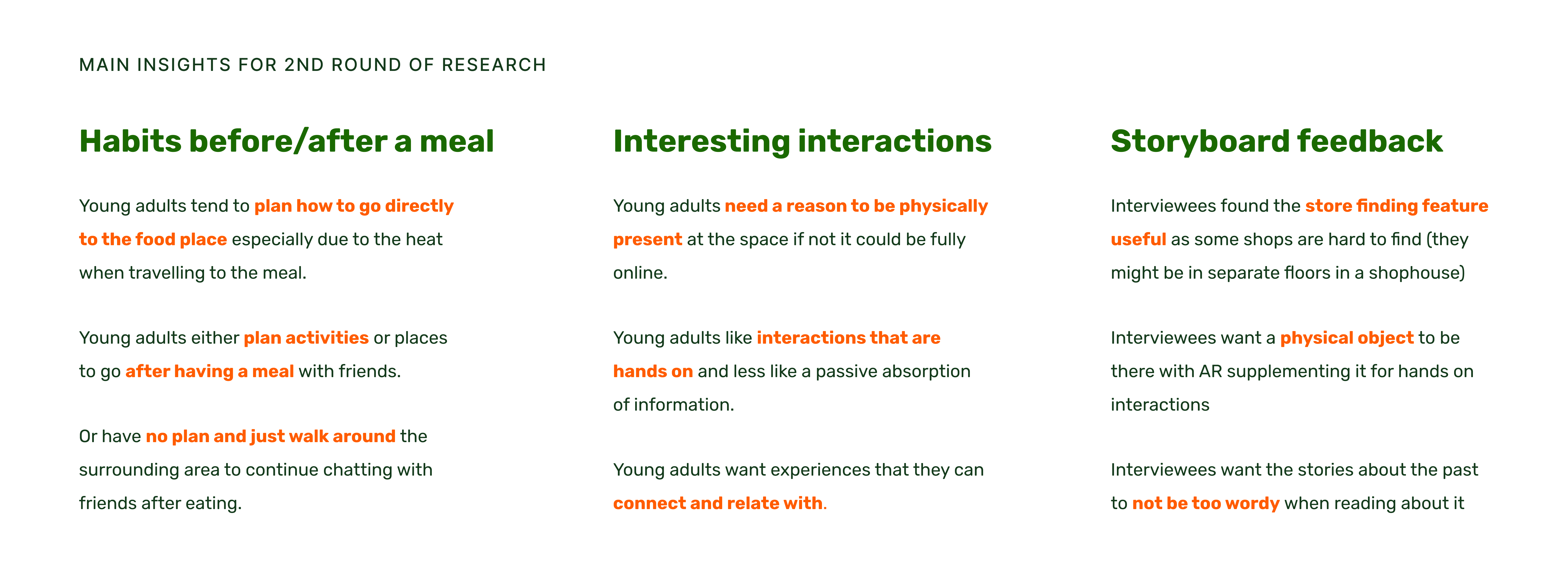
As seen from the insights shown, there are indeed opportunities to inject interactive experiences when youths go out to have a meal with friends. However, to educate them effectively, these interactions need to go beyond just showing text to read but also be fun, relatable and thus memorable. This leads to an additional problem statement:
Young adults need a way to sustain what they have learnt because they forget about information learnt passively
To solve this problem, we each ideated on a solution and combined our ideas, making a storyboard as seen below.
The general idea is to leverage on the waiting time for food to prompt young adults to download an educational application (app). Subsequently, the user would be able to collect digital artefacts with educational value when visiting places of interest. This includes the food establishment they are already in.

As we knew that downloading an app has high friction. We wanted to make the app more useful by providing information on places of interest in the area as well as how to navigate to those places.
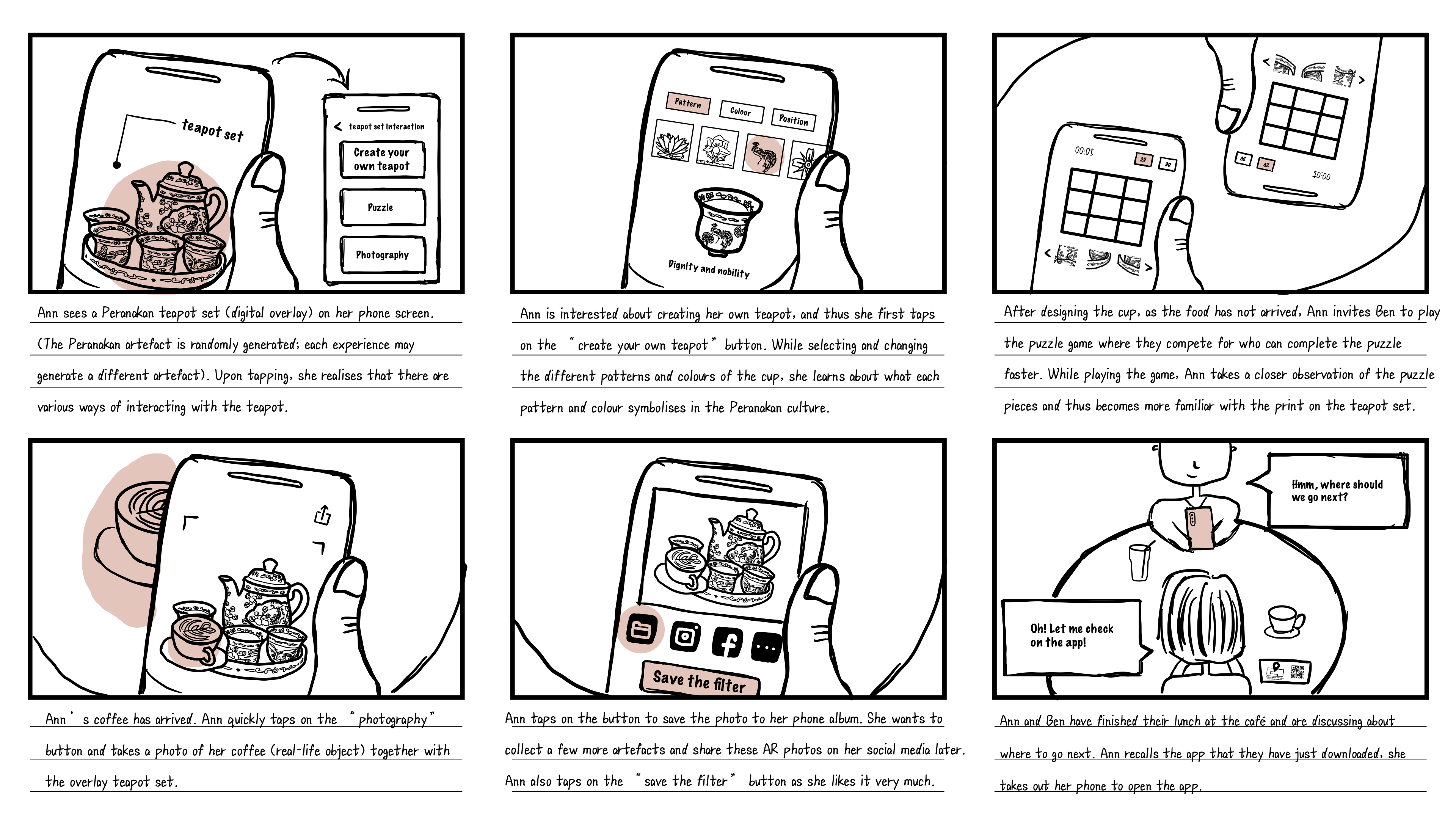
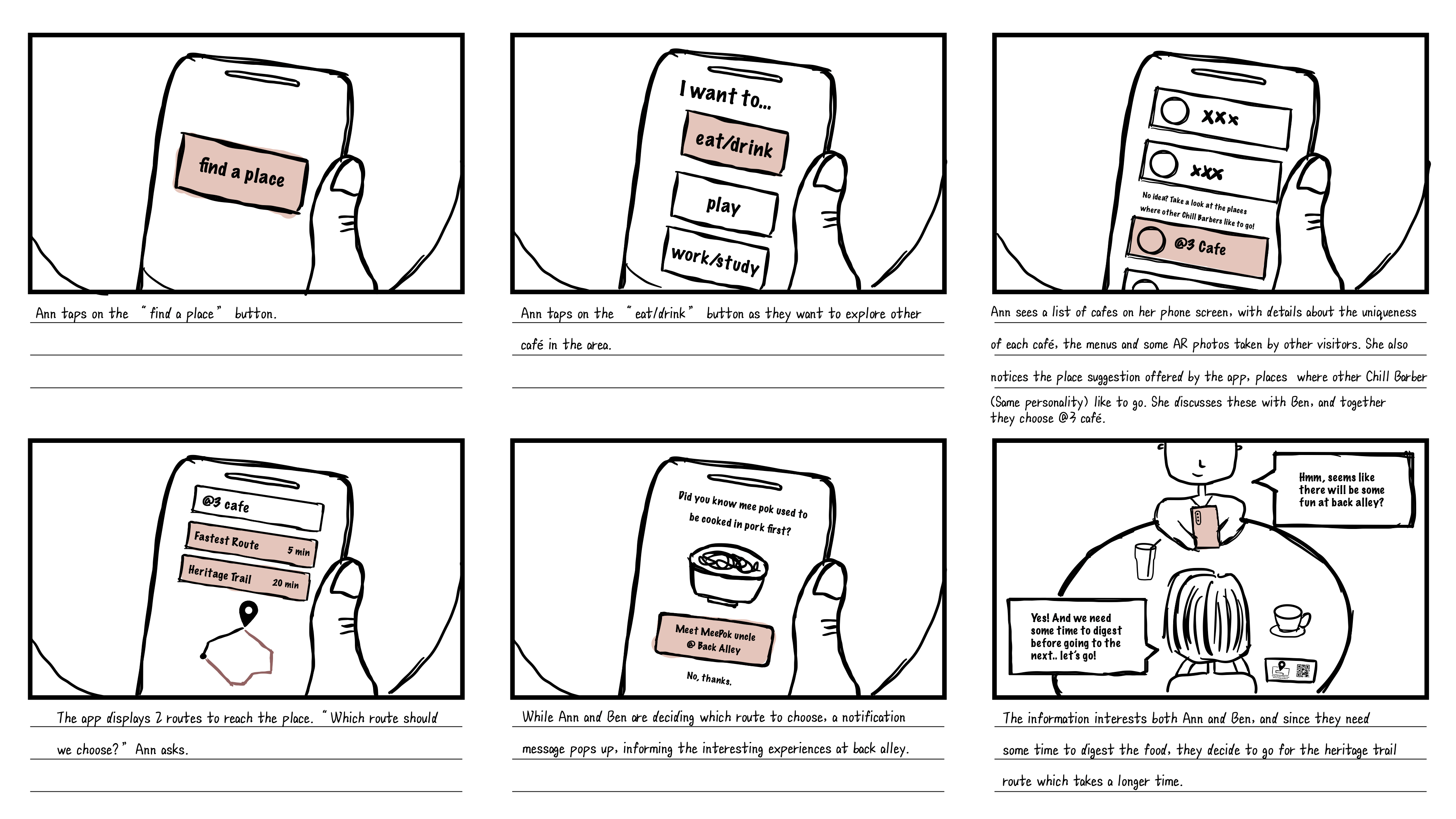
While navigating to the next location, these young adults would also encounter physical installations in KB’s back alley. Using their phone to scan the installations would unlock augmented reality (AR) experiences that are hands on and educational. These interactions aim to be fun and relatable, in order to be memorable to the young adult.
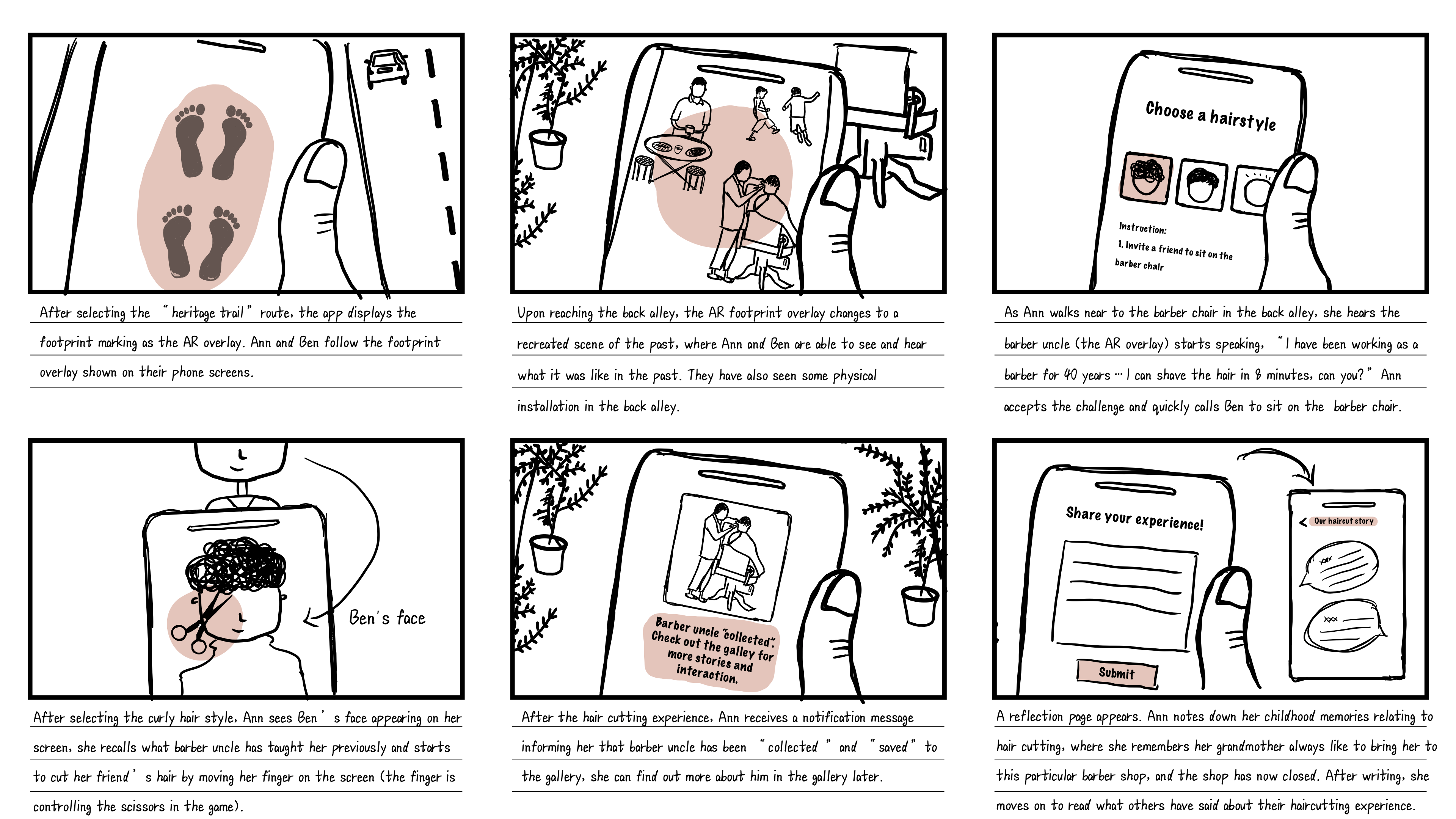

The result is an application that has AR interactions based in the back alley of Kampong Bahru. The key features are as follows:
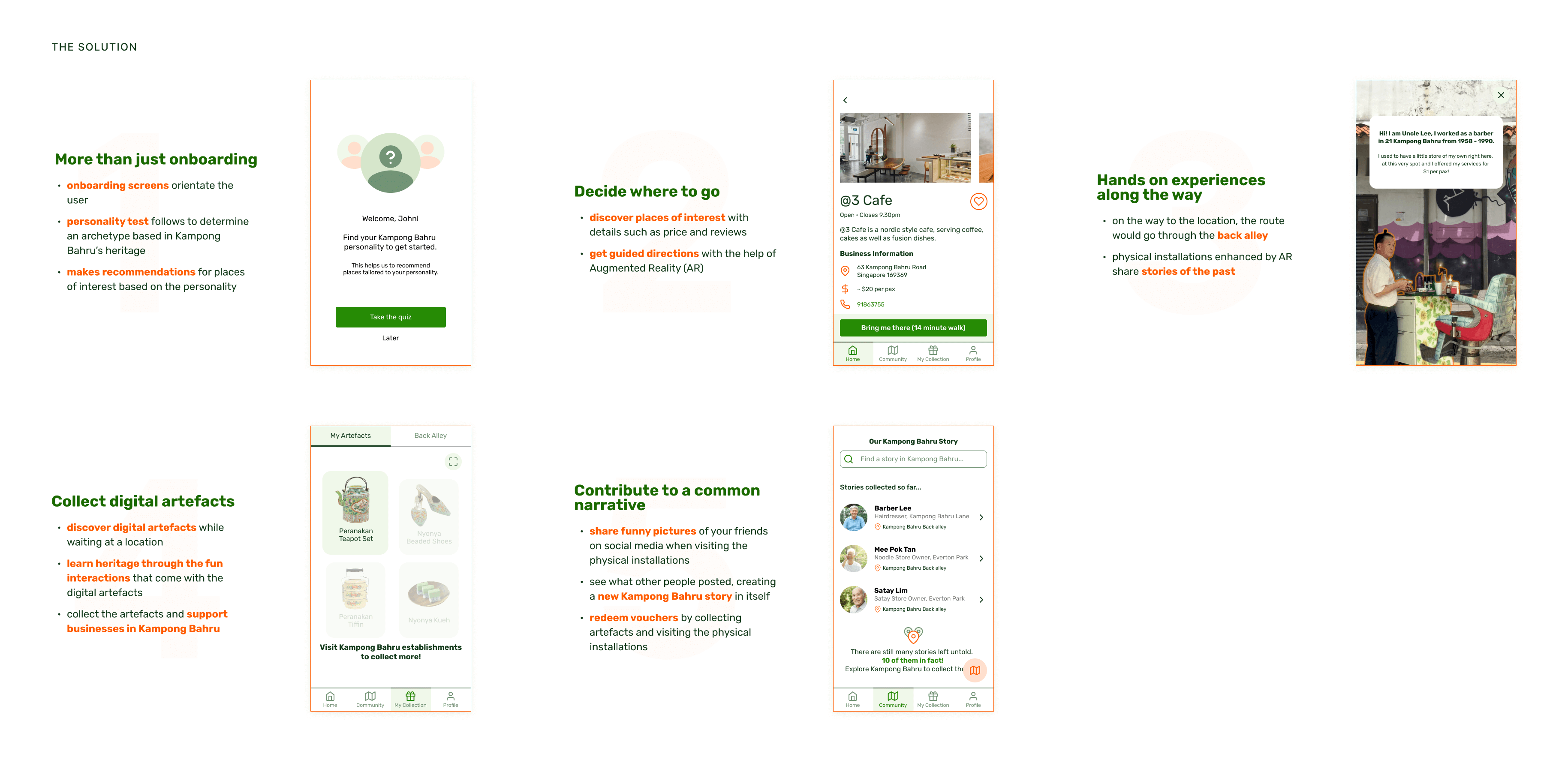


Our team went through 3 iterations and 2 user tests, namely a prototype and a usability test to come up with our final solution. Here are 3 major improvements:

The full user journey can be seen in the embedded slideshow below.
The final Figma prototype can be accessed
here
This project had the most setbacks amongst all the UX projects I have done and thus had the most opportunity for learning. Here are some of the learnings for the entire project:
A personal goal of mine was to make this project a “viral” experience if it were to be implemented by the client. Although we tried, I personally felt we did not quite achieve that. Furthermore, our app itself became too big with too many user flows and features. We could have been a bit more focused on that aspect. However, all things considered, we came up with some interesting interactions by bouncing ideas off each other and I am proud of the work we have done.
Thank you so much for reading! I hope you enjoyed learning about this project as much as I enjoyed working on it! I would also like to thank my teammates Cheryl, Min Yee and Li Jie for working on this with me as well as Prof Dennis Ang for the guidance along the way.
